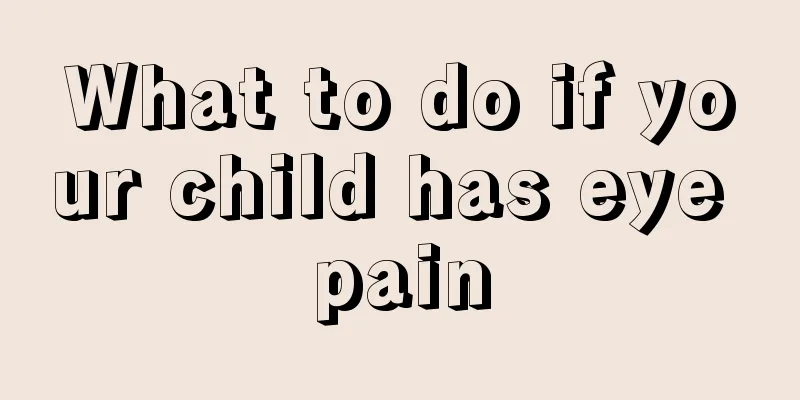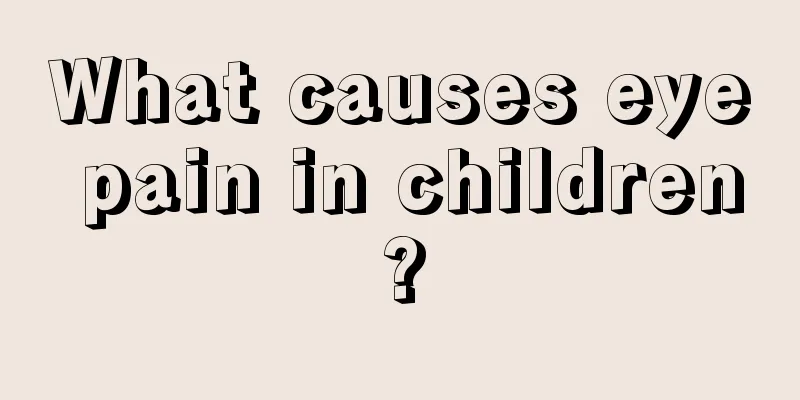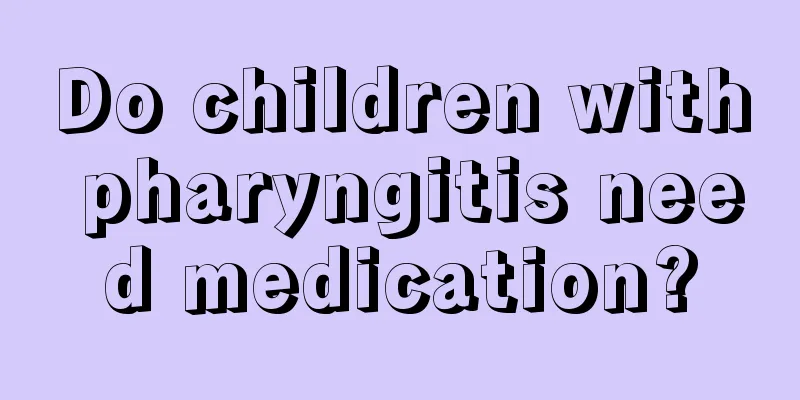What to do if your child has eye pain

|
If a child has eye pain, it must not be ignored. This problem is quite serious for children, especially for those who are just in a developmental stage. Special attention must be paid to them. Take them to the hospital for relevant examinations as soon as possible. Only in this way can you know the specific condition of your child at the first time, and take some targeted treatment measures according to the cause of the disease. treat 1. Local treatment (1) The main function of flushing the conjunctival sac is to clean it. Commonly used solutions are normal saline, 2% to 3% boric acid solution, or 1:5000 to 1:10000 liters of mercuric (or potassium permanganate) solution. (2) Do not cover the affected eye. Conjunctivitis produces a lot of secretions. If you cover the affected eye, the secretions will not be easily discharged and will accumulate in the conjunctival sac. Covering the eye will also increase the temperature of the conjunctival sac, which is more conducive to the reproduction of bacteria and aggravates conjunctivitis. (3) Topical antibacterial drugs or antiviral eye drops. According to the etiological diagnosis, choose the appropriate therapeutic drugs. 0.5% to 1% silver nitrate can be used. When dropping eye drops, turn over the eyelids and drop the eye drops on the conjunctiva. Wait for a while after dropping the eye drops and rinse with normal saline. Or use a cotton swab to dip a small amount of liquid medicine, apply it to the surface of the conjunctiva, and then rinse with saline. 2. Systemic treatment For severe conjunctivitis, such as gonococcal conjunctivitis, systemic medication is required. prevention Conjunctivitis is mostly transmitted through contact, so it is recommended to wash hands frequently and avoid rubbing the eyes at will. It is recommended to wash your face with running water, and towels, handkerchiefs and other items should be kept separate from others and cleaned and disinfected frequently. Certain isolation measures should be taken for patients with infectious conjunctivitis, and they are not allowed to swim in public swimming areas. If conjunctivitis develops in one eye, the patient must be advised to protect the healthy eye from infection. Those who work in windy, dusty, and smoky environments should improve their environment and wear protective glasses to prevent conjunctivitis. (6) Follicles Follicles are yellow-white, smooth, round protrusions with a diameter of 0.5 to 2.0 mm. However, in some cases, such as chlamydial conjunctivitis, larger follicles may also appear. Viral conjunctivitis and chlamydial conjunctivitis are often accompanied by obvious follicle formation and are called acute follicular conjunctivitis or chronic follicular conjunctivitis. (7) Membrane and pseudomembrane Membrane is a cellulose exudate attached to the surface of the conjunctiva. Pseudomembrane is easy to peel off, while true membrane is not easy to separate. After forced peeling, the wound will bleed. The essential difference between the two lies in the difference in the degree of inflammatory response. The inflammatory response of true membrane is more severe. Corynebacterium diphtheriae causes severe membranous conjunctivitis; β-hemolytic streptococci, Klebsiella pneumoniae, gonococci, adenovirus, inclusion bodies, etc. can all cause membranous or pseudomembranous conjunctivitis. (8) Damage to scar matrix tissue is the histological basis of conjunctival scar formation. Early manifestations of conjunctival scarring include narrowing of the conjunctival fornix and subepithelial fibrosis of the conjunctiva. (9) Swollen preauricular lymph nodes Viral conjunctivitis is often accompanied by swollen preauricular lymph nodes. (10) Pseudoptosis is caused by hypertrophy of the upper eyelid tissue due to cell infiltration or scar formation, resulting in mild ptosis, which is more common in the late stage of trachoma. (11) Conjunctival granuloma is less common and can be seen in chronic inflammation caused by tuberculosis, leprosy, syphilis and rickettsia. |
<<: What is the best treatment for eczema in children?
>>: What should I do if my child is short in height?
Recommend
How to correct hunchback in children
It is common for children to have hunchbacks in d...
Black spots on the child's face
Generally, children have very good skin, which lo...
How to remove red birthmarks on baby’s eyelids?
When a baby is just born, a small red birthmark m...
How do babies become good and not picky eaters?
Many parents are worried about their babies being...
What is the cause of peeling skin on the baby?
We all know that every baby is the hope of the fa...
Treatment of chronic tonsillitis in children
Because children are in a stage of physical devel...
Is it easy for a child's skin to turn from dark to white?
Skin is our outer coat. As Chinese people of the ...
How long does it take for a child to crawl?
For little babies, they spend a period of time af...
What is the reason for baby milk regurgitation
The main source of nutrition for infants is breas...
Why does my baby's legs suddenly shake when he falls asleep?
Babies sleep for a long time and are easily awake...
Neonatal colic
For many newborns, because their language develop...
Do boys develop breasts during puberty?
Everyone knows that when girls enter puberty, the...
How to treat herpes in children? Common treatments are these
If herpes appears in a child, parents should pay ...
What should I do if my child's feet are a little bent?
As children grow up, any physical changes will be...
9 tips to raise smart kids
All parents want their children to be smarter. Wh...









